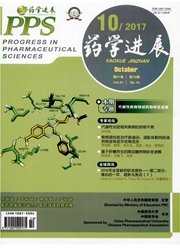

 中文摘要:
中文摘要:
药物靶点的鉴定和相关研究在药学研究领域具有重要的理论指导意义和实用价值。利用亲和探针偶联靶分子的方法是目前发现药物靶点的主要手段之一。该方法可从分子水平发现药物的作用靶点,从而对药物的分子作用机制提供细胞水平的直接证据。从DNA和小分子药物探针的构筑和应用入手,对近些年鉴定DNA损伤识别蛋白的研究进展进行了较为详尽的讨论,并简要介绍目前探索小分子药物作用靶点的主流技术。作为亲和偶联鉴定药物作用靶点方法的重要组成部分,亲和探针设计的合理性关系到方法本身的可操作性以及鉴定结果的可靠性。从多个角度对DNA探针和小分子药物探针的设计经验进行了较为系统的总结,例如经典的亲和纯化分离方法,以及更为高效的光激发共价偶联技术等。这些方法和思路为探索DNA损伤相关蛋白质的功能以及小分子药物的细胞作用机制提供了丰富的研究工具,有助于从分子水平理解药物的作用机制。
 英文摘要:
英文摘要:
Drug target identification is a very crucial step for pharmaceutical research. Affinity-based probe is one of the most commonly used approaches to identify drug targets. The method identifies drug target at molecular level and also provides direct evidence for molecular mechanism of drugs at cellular level. Based on the strategies for constructing DNA probes and small molecule drug probes, this paper discussed in details about recent progress in the identification of DNA damage recognition proteins and briefly introduced the mainstream technologies for exploring small molecule targets. As the most important part of probe-based drug discovery strategy, rational design of DNA or small molecule drug probes directly correlates with method operability and reliability of the final results as well. The experiences in constructing DNA and small molecule drug probes were summarized from different perspectives, ranging from traditional affinity purification approach to highly effective covalent coupling by photoaffinity reaction. These methodologies and insights will provide us with a rich pool of tools for investigating DNA damage related proteome and cellular processes of small molecule drugs, improving our tmderstanding of drugs mechanisms at molecular level.
 同期刊论文项目
同期刊论文项目
 同项目期刊论文
同项目期刊论文
 Synthesis of Monodisperse, Hierarchically Mesoporous, Silica Microspheres Embedded with Magnetic Nan
Synthesis of Monodisperse, Hierarchically Mesoporous, Silica Microspheres Embedded with Magnetic Nan 期刊信息
期刊信息
